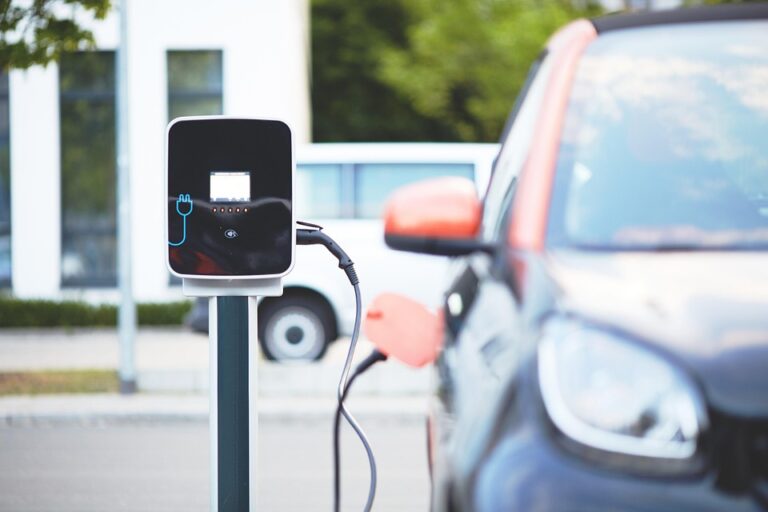Funding the Future: Government Incentives for Electric Charging Station Development
In an era where sustainability takes precedence, electric vehicles (EVs) are becoming a cornerstone of modern transportation. However, to realize the full potential of EV adoption, an extensive network of electric charging stations is essential. Government incentives play a crucial role in facilitating the development of these stations. This article explores various funding options and initiatives that aim to boost the infrastructure necessary for electric charging stations, paving the way for an environmentally-friendly automotive future.
The Importance of Electric Charging Stations
Electric charging stations are not just a convenience; they are essential for the widespread adoption of electric vehicles. With EV sales expected to surge in the coming years, the need for a robust charging infrastructure is paramount. Here’s why:
- Increased Driving Ranges: A well-developed charging network alleviates range anxiety for potential EV buyers.
- Supports Renewable Energy: Charging stations, especially those powered by renewables, maximize the environmental benefits of electric vehicles.
- Economic Growth: Building charging stations generates jobs and stimulates local economies.
Government Incentives That Drive Development
Governments worldwide recognize the significance of enhancing electric vehicle infrastructure. They are unveiling a variety of incentives aimed at facilitating the deployment of electric charging stations. Below are some of the primary funding mechanisms currently influencing the EV charging landscape.
1. Federal Grants and Subsidies
In several countries, federal governments offer grants to local and state authorities for the development of electric charging stations. This funding often comes from allocated budgets aimed at mitigating climate change. For instance:
- In the United States, the Infrastructure Investment and Jobs Act (IIJA) allocates billions to build EV charging networks across the nation.
- Countries like Germany and Norway offer direct subsidies to private entities that develop public charging stations.
2. Tax Credits for Charging Infrastructure
Tax incentives are another effective way to stimulate the construction of charging stations. Businesses and homeowners can often receive tax credits for the cost of purchasing and installing charging equipment. In the U.S., the Federal Electric Vehicle Charging Tax Credit enables individuals and organizations to deduct a percentage of their costs from their taxable income.
3. State-Level Incentives
Many states have developed unique incentives to further support the electrification of transportation. These can include:
- Rebates: States like California offer rebates for the installation of home or business charging stations.
- Low-Interest Loans: Some states provide low-interest financing options designed to support businesses investing in EV infrastructure.
4. Public-Private Partnerships
Governments are increasingly engaging in public-private partnerships (PPPs) to accelerate charging station development. Collaborations between government agencies and private companies allow for shared risks and costs while combining resources and expertise. An example can be seen in several European countries, where energy providers team up with municipal governments to roll out charging networks.
5. Utility Programs
Utilities are playing a pivotal role in the expansion of charging infrastructure. Many have developed programs designed to reduce installation costs for charging stations. This includes:
- Offering incentives for demand-response programs, which encourage EV owners to charge during off-peak hours, balancing the grid load.
- Providing rebates to businesses that install chargers, helping to offset equipment and installation costs.
6. Grant Programs for Community Projects
Community-focused initiatives funded by government grants aim to promote equitable access to charging stations across different demographics. These programs especially assist underserved areas, ensuring that all communities can benefit from the electric vehicle revolution.
The Road Ahead: Challenges and Opportunities
While these incentives are vital for the growth of electric charging stations, several challenges remain:
- Standardization: The lack of a unified standard for charging stations can hinder development.
- Funding Availability: As federal and state budgets fluctuate, the consistency of funding remains a concern.
- Public Awareness: Ongoing education about the benefits of charging stations and EVs is required to drive consumer acceptance.
However, as technology advances and public policies evolve, opportunities abound. Governments are likely to introduce new funding mechanisms, ensuring that electric charging networks continue to expand.
Conclusion: Charging Into a Sustainable Future
The journey toward widespread electric vehicle adoption hinges on the development of a comprehensive charging infrastructure. Government incentives are crucial in making this vision a reality, effectively lowering installation costs, boosting public-private collaboration, and enhancing access.
To capitalize on this momentum, businesses and localities should stay informed on available incentives and actively seek funding opportunities for electric charging stations. By working together, we can ensure that our roads lead to a sustainable future where electric vehicles are the norm, driven by an accessible and efficient charging network.
For more information on electric vehicle charging, incentive programs, and best practices in your area, subscribe to our newsletter and stay updated!


